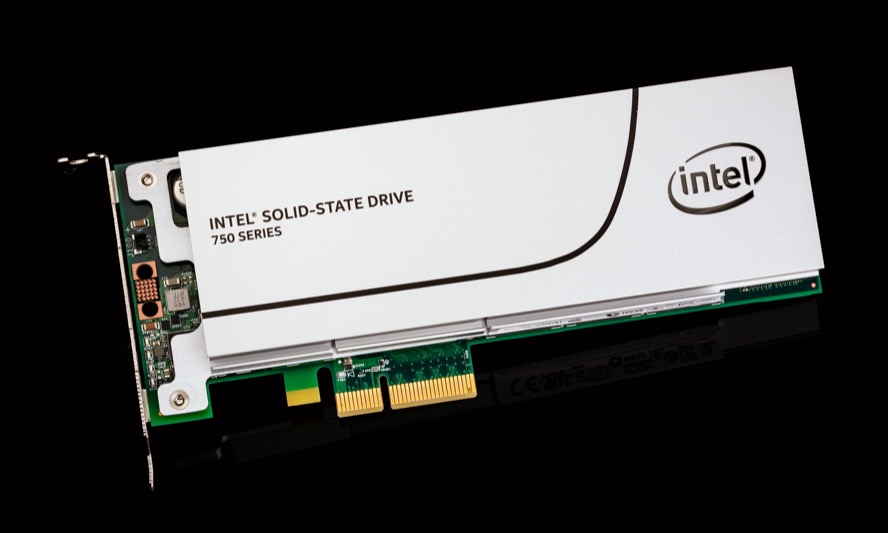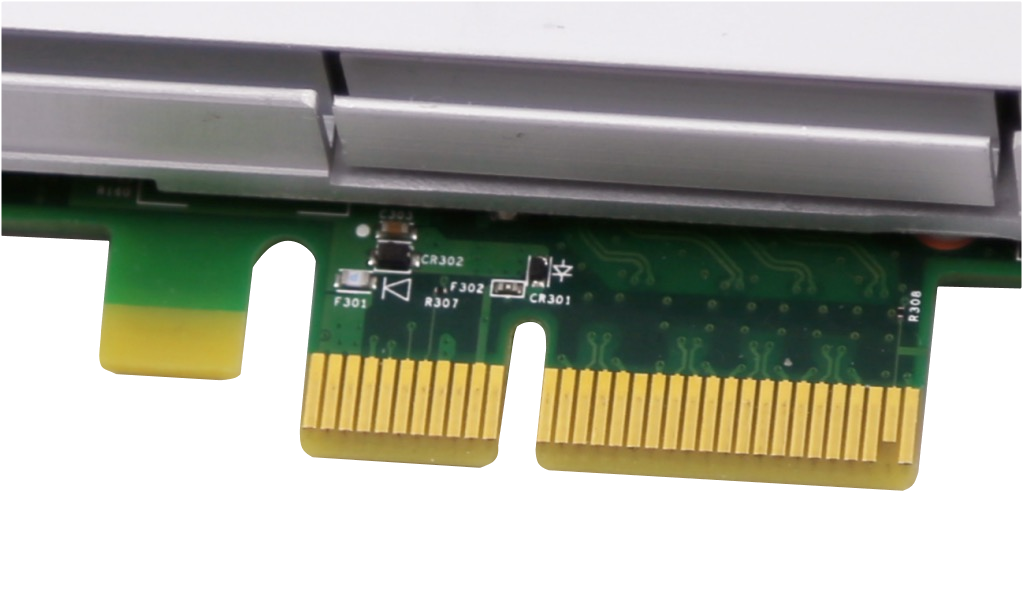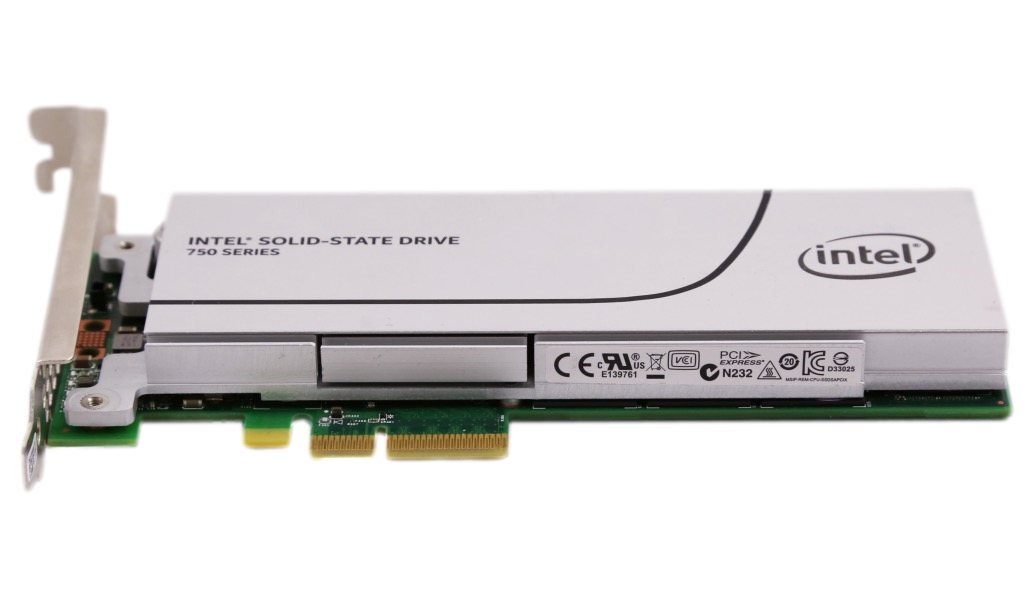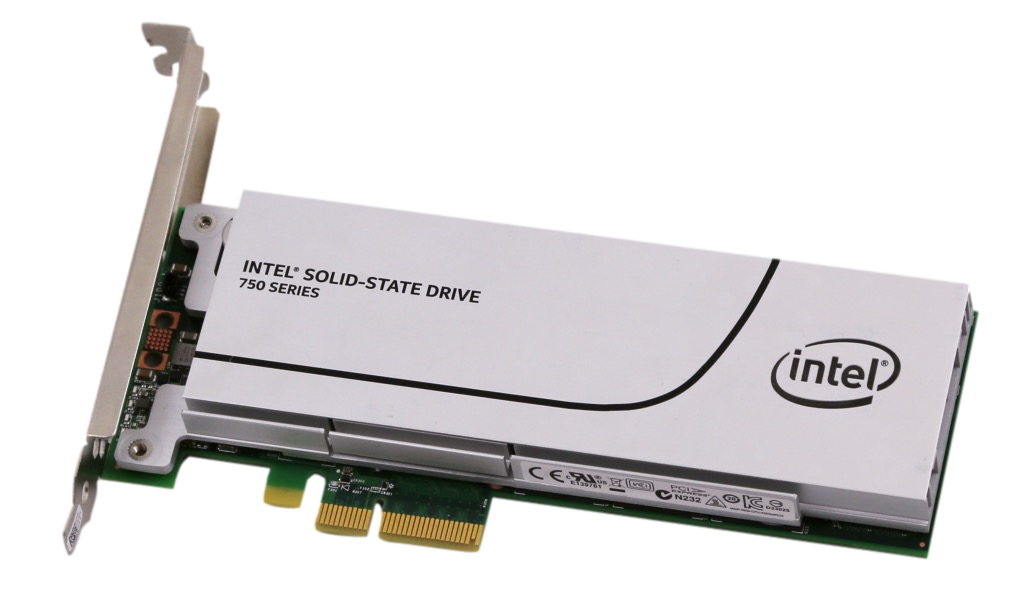The Consumer Electronic Show is now done and overwith for this year, but the technology showcased, especially in the storage division, extends much from the drive we have on hand today. We are going to take an in-depth look at the Intel 750, the world’s first consumer drive featuring NVMe at 2.4 GB/s!
The Intel 750 features Intel’s latest storage technology with an 18-channel NVMe flash controller. Before we get started, let us say this, from what we have seen with the Intel 750, it is not only fast, but the price is incredible as well! The Intel 750 is the first costume released NVMe SSD and it was also the first PCIe Gen 3×4 SSD to be released by Intel directly designed for the client and workstation markets.
WHAT IS NVME, AND WHY IS IT BETTER THAN PCIE & SATA?
So let’s start by getting a few of the fundamentals out of the way. We know that SATA has paved the way for many years, serving to provide the main laneway for your storage devices, but with SATA 3 (6 Gb/s) technology capping out throughput around 600 MB/s, it leaves us wanting more. SSD’s then made their way to the PCIe laneways, allowing throughout to skyrocket to actual transfer speeds of around 985 MB/s with PCIe Gen 3. PCIe doesn’t sound that bad does it?
Ok, so where does NVMe fit in to all of this? Previously, and for many years prior to flash becoming the ‘thing’ in the storage industry, there was an interface created known as AHCI. AHCI was original designed for hard drive, which are known for high latency and slow performance. Reasonably, this interface was carried over and was used in the lower latency and quicker performing solid-state drives we know and love today. Unfortunately, the AHCI interface is inefficient and, now, is not the most suitable option for blazingly quick drives.
NVMe, which is abbreviated from Non-Volatile Memory Express, provides a fresh interface to replace the AHCI logical interface over the PCIe bus. By doing so, this allows for better performance from flash storage by exploiting parallelism and provides lower latency due to a streamlined storage stack. With less latency, there is a reduction is CPU cycle usage by 50%.
So when we think about it, NVMe allows for an efficient storage means that in turn creates a cooler running system with higher throughput. As seen from The SSD Review’s coverage at Flash Memory Summit 2015 and CES 2016, the NVMe technology is that of which manufactures can build upon, rather than around like SATA.
With NVMe and PCIe combined, this provides for a direct pathway for your storage to the CPU, this in turn results in greater speeds to be achieved from their properly equipped storage devices. We encourage you to ensure you have the correct drivers installed to ensure that this technology is enabled. Some operating systems come with NVMe pre-installed, where others will require you to install this prior to usage.
Coming back to the Intel 750, this drive is bootable once your operating system is installed. Intel lists the following operating systems to support this: Windows 7 64 bit, Windows 8 64 bit, Windows 8.1 64 bit, Windows 10 64 bit, Ubuntu 14.05 and 15.05 as well as UEFI 2.3.1 or later.
INTEL 750 PCIE SSD SPEICIFCATIONS & PRICING
The Intel 750 Series of SSD’s are available in two form factors, the model in which we have today, the half-height, half-length (HHHL) add-in card, as well as the 2.5″ 15mm with the SFF-8639 connector. The Intel 750 HHHL is available in capacities ranting from 400GB, 800GB and 1.2 TB. Taking a look on Amazon, you will see that the pricing ranges from $358.99 for the 400 GB, $699.99 for the 800GB and $1,120.00 for the 1.2TB option we have in our hands today. That puts this drive at just under $1 per GB, which is incredible considering the expected speeds we can imagine this drive will push out.
Intel lists our sample to push out sequential read speeds of up to 2.5 GB/s and sequential write speeds of up to 1.2 GB/s. As seen on The SSD Review, the 400 GB version is expected to reach 2,200MB/s read and 900MB/s write.
This SSD features TRIM, garbage collection, as well as power-loss protection, but as you will see there is no hardware encryption, which Intel saved for their enterprise drives. Intel lists the endurance rating to be 70 GB Writes Per Day and up to 127 TBW (Terabytes Written), which is also accompanied by a 5-year limited warranty.
Review Overview
SSD Build
Specifications
Performance
Pricing
Warranty
FAST!
The Intel 750 PCIe SSD is truly a remarkable and ground breaking drive! This is well worth every penny!
 Technology X Tomorrow's Technology Today!
Technology X Tomorrow's Technology Today!




